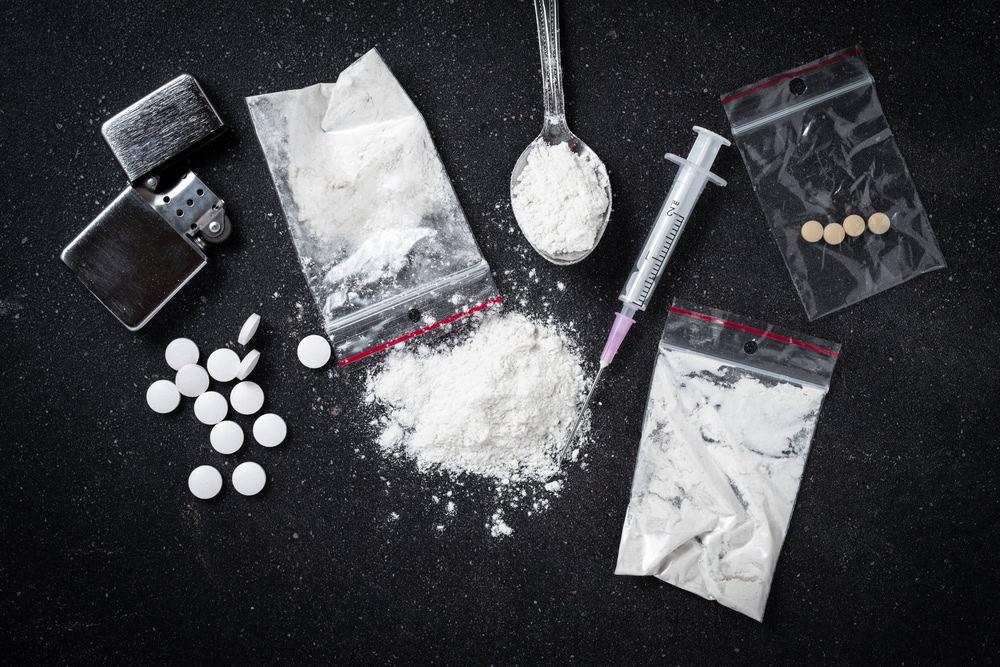


Fentanyl and its derivatives have become the leading driver of overdose deaths in the US. According to the CDC, more than two-thirds of the reported 107,081 drug overdose deaths in the country involved opioids, mainly illicitly manufactured fentanyl. Fentanyl is very potent – it is up to 50x and 100x stronger than heroin and morphine, respectively. But now, reports are showing that a group of new designer drugs hitting the streets may be more potent than fentanyl.
New studies suggest that these illicit drugs may be 1000x stronger than morphine and may require more doses of opioid overdose reversal drug naloxone to reverse an overdose. According to one study, patients overdosing on drugs like nitazenes needed two or more doses of naloxone. In comparison, those who overdosed on fentanyl only needed a single dose of the drug.
Designer drugs, also known as synthetic drugs, or new psychoactive substances (NPS), are substances created in a laboratory to mimic the effects of controlled or illegal drugs. These drugs are created by modifying the chemical structure of legally restricted or prohibited drugs, such as amphetamines, opioids, or hallucinogens, to produce substances with similar psychoactive effects but different enough to avoid being classified as illegal.
Designer drugs can come in various forms, including pills, powders, liquids, or herbal mixtures, and they are often marketed as legal alternatives to traditional drugs. Currently, there are more than 200 known NPS – though there isn’t a way for pharmaceutical or legal experts to determine the drugs’ chemical composition. Most are lab-produced in China, but some come from other countries and are smuggled into the US.

While research into the effects and dangers of designer drugs is ongoing, we already know that NPS abuse is associated with severe consequences. Here’s a look at some common risks:
The chemical composition of designer drugs can vary widely, even within the same type of drug. Users may have no way of knowing exactly what they are ingesting or how potent it is. This makes it difficult to predict the effects or potential risks associated with these substances
Designer drugs are often produced in unregulated settings, such as illicit laboratories or underground markets. This lack of quality control means there is no oversight to ensure product purity or safety. Contaminants and impurities can be present in these drugs, increasing the risk of adverse reactions or overdose.
Designer drugs can produce unpredictable and potentially harmful effects on the human body and mind. Due to their varying chemical compositions, users may experience severe side effects, overdose, or dangerous interactions with other substances they may be using.
Due to the constantly evolving nature of designer drugs and limited scientific research, the long-term health consequences of prolonged use remain largely unknown. Users may be exposing themselves to long-term risks that are not yet fully understood.
The use of designer drugs can lead to various short-term and long-term physical health hazards, including:
Designer drugs can also create severe mental health risks. These include:
Like traditional drugs of abuse, designer drugs carry addiction risks and can lead to physical and psychological dependence. Users may find it difficult to quit, leading to ongoing health and social problems.
The legal status of designer drugs varies by country and jurisdiction. Possession, distribution, or manufacturing of these substances can lead to criminal charges and legal penalties.
Quitting designer drugs can result in withdrawal symptoms, including depression, anxiety, insomnia, and intense drug cravings. These symptoms can make it challenging for individuals to stop using the substances.

Synthetic opioids are the main driver of the deadliest US drug epidemic. Despite this, people are still seeking and using these drugs. Here are some common reasons why designer drugs are appealing, especially to the younger demographics.
Surprisingly, many people cite the lack of odor as one of the main reasons they opt for designer drugs. Drugs like meth and marijuana are easily identifiable because they produce a scent that can linger on carpets, clothing, and curtains. But NPS doesn’t have a smell. In fact, some have the best flavors and scents that are pretty enticing to young adults who want to abuse drugs undetected.
Young people get drawn to new experiences and sensations. Designer drugs, with their constantly evolving chemical compositions, promise novel effects that differ from traditional drugs.
Some designer drugs are marketed and branded with appealing names, packaging, and labels, which can make them more attractive to younger individuals. This branding may play on popular culture or trends, making the substances seem trendy, fashionable, and, in many cases, safe. Besides, NPS are readily available, especially through online markets and underground communities. The ease of access and discreet packaging make them appealing to those who may want to experiment discreetly
Designer drugs pose significant community threats, particularly to young adults drawn in by their allure. The best way to combat this issue is to prioritize drug awareness, staying informed about emerging trends, and education as key pillars of our preventive strategies efforts.
Awareness is often the first step in prevention. Understanding the potential dangers and consequences of these substances can promote safer choices, reduce harm, and support a healthier, drug-free life. It also allows you to educate and empower others about the dangers of these substances.
It’s also important to understand the treatment options that are available for those struggling with designer drug addiction. Treatment centers like More Than Rehab offer comprehensive addiction care to support people on their journey to recovery. Don’t struggle alone. Let us help you regain control of your life.


